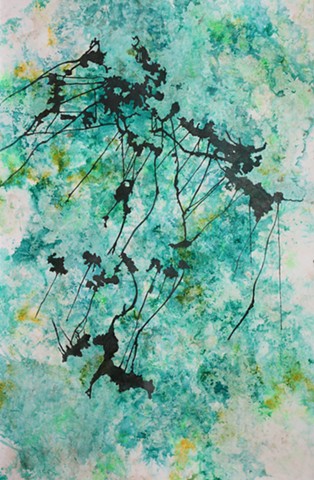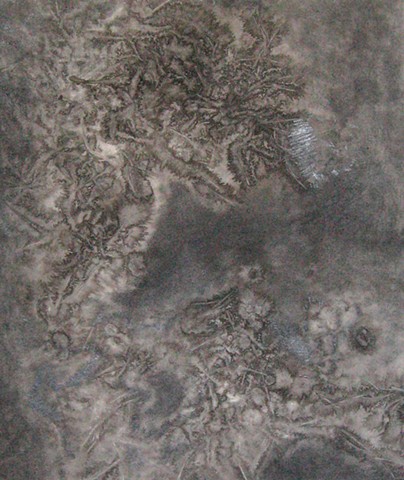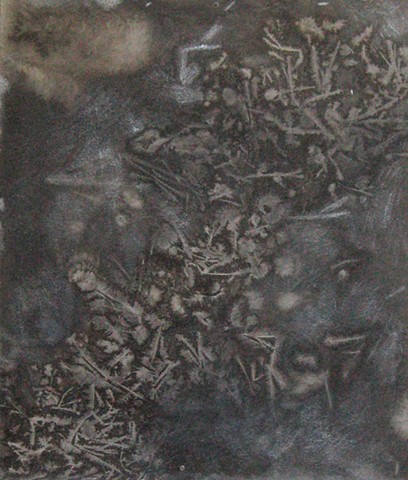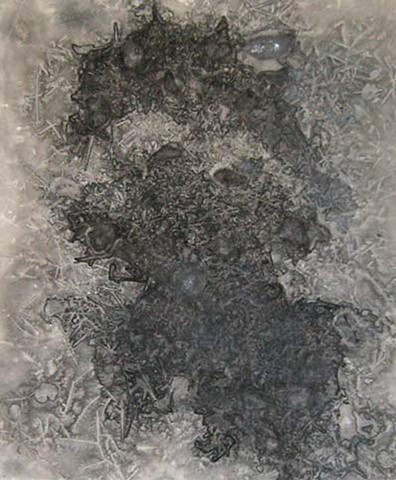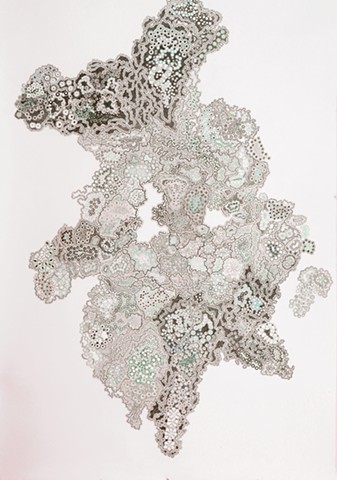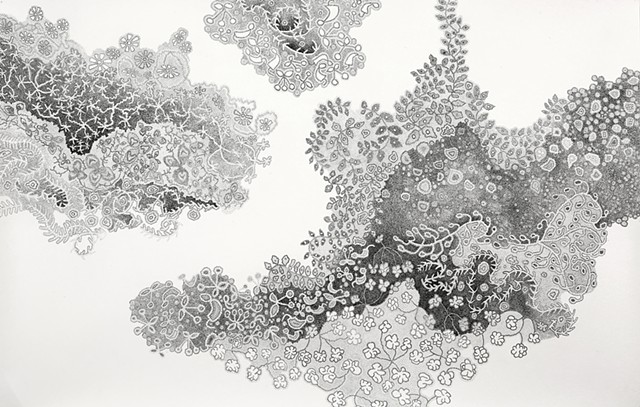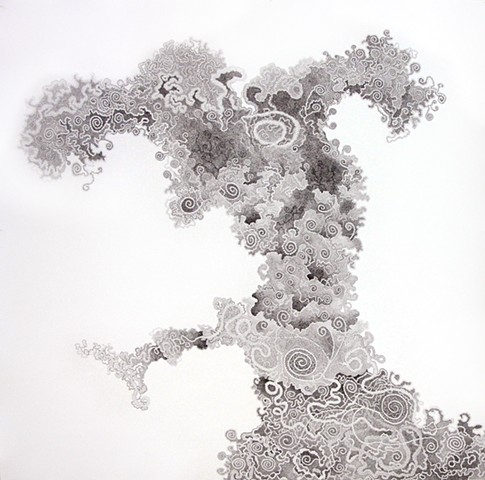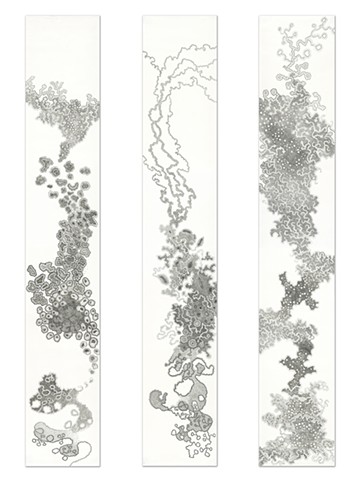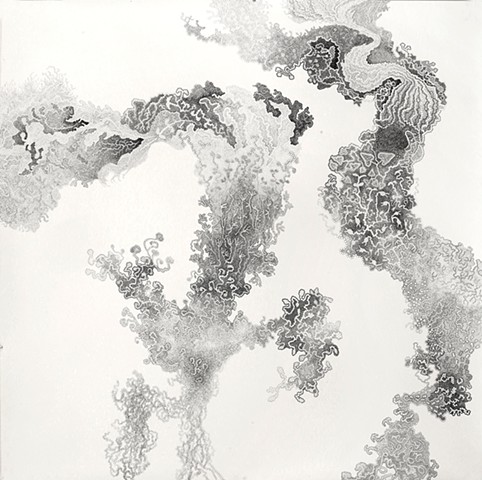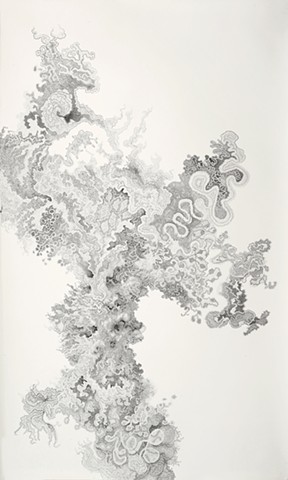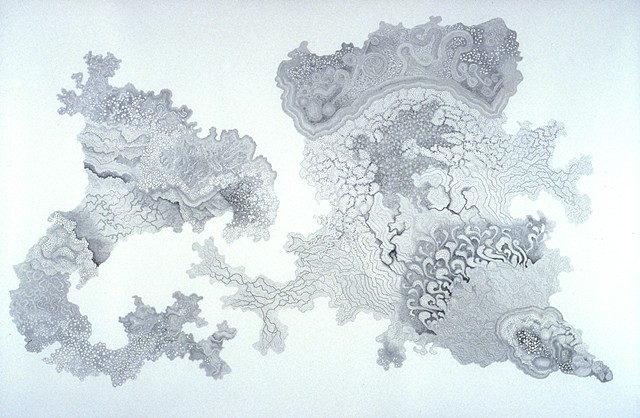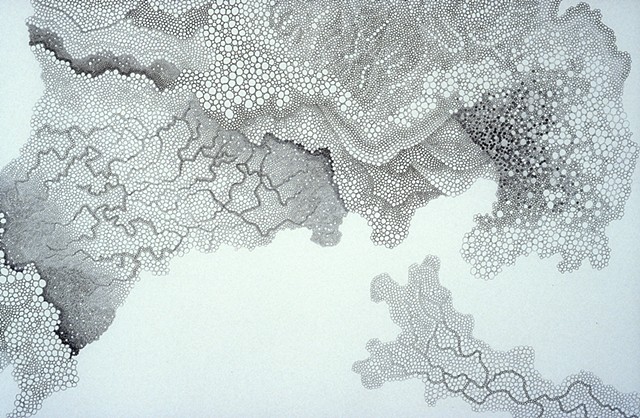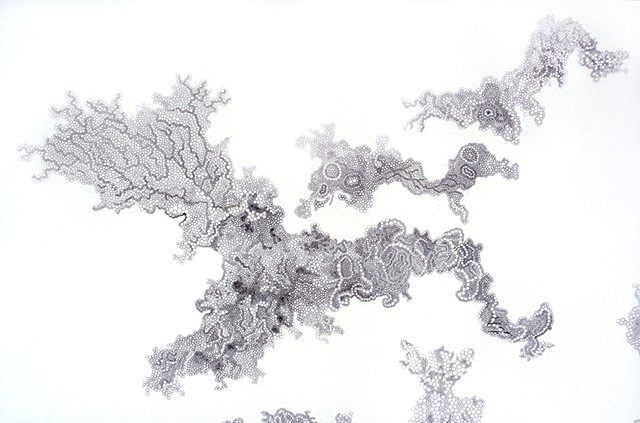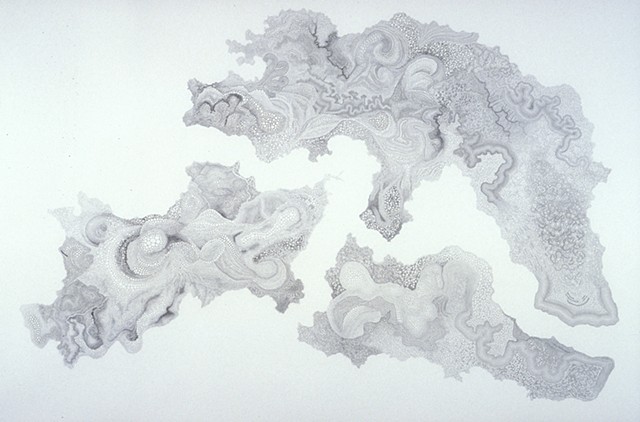Drawings
This section features two kinds of drawings: "rain drawings" and "circle drawings." I call the first series “Rain Drawings” because I started making them during an especially rainy stretch in Vermont. Curious about how I could incorporate the unpredictable rhythms of rain into my work, I put pieces of paper outside, covered them with leaves, twigs, and anything else around me, splashed some ink on the paper and later brought them inside to dry. After the rainy spell ended, I continued doing this technique without the help of the rain, adding water myself. When the rain drawings are dry, I draw on them with graphite or ink.
The second series I call "circle drawings." Circles—the shape of molecules, planets, craters, and some seeds—fit well with my primary interest: growth and transformation, and more specifically, organic growth. Like Legos, they can be stacked and strung together into a line. Unlike Legos, they can also be looped, skewed, and overlapped. They are versatile, simple and elegant.

